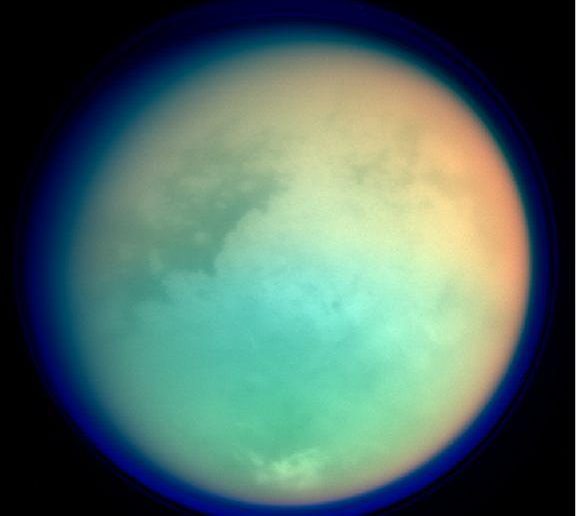
Titan in false color showing surface details and atmosphere. NASA/JPL/Space Science Institute
Astronomers believe that they detected liquid waves on Titan, Saturn’s largest moon, the first time that such a discovery has been made on another world.
The signature of ripples were detected on Punga Mare, a sea of hydrocarbons, such as methane and ethane, that exist in liquid form on the surface of Titan at -180°C.
The findings were presented by scientists Jason Barnes at the 45th Lunar and Planetary Science Conference (LPSC) in Texas this week, where he described how the Cassini spacecraft captured a number of unusual glints of sunlight from the surface of the Punga Mare, which may be reflections from tiny ripples or waves, measuring less than 2cm high.
Noting the importance of their discovery and the possibility that more waves may be observed in the coming years as the seasons on Titan change, the Barnes et al said in their report:
“If correct this discovery represents the first sea-surface waves known outside of Earth. That they have previously been undetected and are now evident is consistent with the Lorenz et al. hypothesis that winds had previously been low due to seasonal cycles but are picking up as northern spring develops.”
Titan is about 1.5 times bigger than the Moon, and is thought to contain around 9,000 cubic km of mostly liquid methane, about 40 times the known reserves of oil and natural gas on Earth, according to the BBC.




